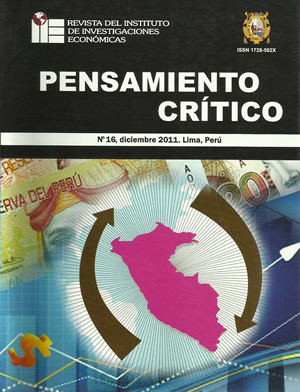Análisis de la gestión del riesgo de la banca múltiple en el Perú: 2000–2010
DOI:
https://doi.org/10.15381/pc.v16i0.9081Keywords:
bank risk, risk management, RAROC.Abstract
The paper analyzes the risk management of banks that do business in Peru, through the application of indicators that relate the profitability of transactions with the risk. The RAROC (Risk adjusted Return on Capital) is one of the indicators associated with net income of an operation or set of operations of the bank in a year for capital at risk o economic capital. The versatility of this indicator allows to measure the bank ‘s risk management in a cross section, compared to other banks or a market benchmark, as well as to measure the evolution of risk management through a period of time compared to a RAROC target. The result shows that the Big Banks revealed a RAROC above the market average: 2.07 vs. 1.75. Medium Banks showed a RAROC below the overall average: 1.23 vs. 1.75. Finally Small Banks obtained an average ratio of 1.74 vs. 1.75, however within the period they showed a fluctuating behavior, above and below the average.Downloads
Published
Issue
Section
License
Copyright (c) 2011 Gaby Cortez Cortez

This work is licensed under a Creative Commons Attribution-NonCommercial-ShareAlike 4.0 International License.
THE AUTHORS RETAIN THEIR RIGHTS:
a. The authors retain their trademark and patent rights, and also on any process or procedure described in the article.
b. The authors retain the right to share, copy, distribute, execute and publicly communicate the article published in Pensamiento Crítico (for example, place it in an institutional repository or publish it in a book), with recognition of its initial publication in Pensamiento Crítico.
c. The authors retain the right to make a subsequent publication of their work, to use the article or any part of it (for example: a compilation of their works, notes for conferences, thesis, or for a book), provided they indicate the source of publication (authors of the work, journal, volume, number and date).






